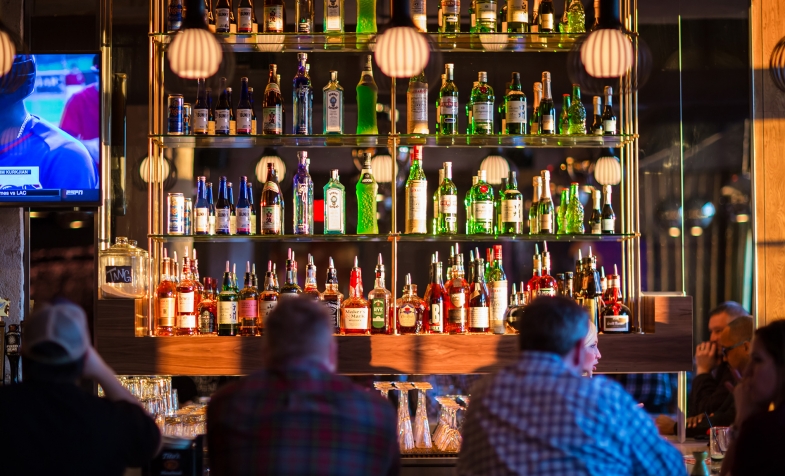COVID-19, the Black Swan: How it Might Impact Retail and Restaurants
COVID-19, the Black Swan: How it Might Impact Retail and Restaurants
It has quickly become apparent that we are heading into an economic situation much like our grandparents and relatives may have experienced during WWII or the Great Depression. The good news: history shows us that we will recover. The question is, how long will this last and how will the experience change us?
Impacts Abroad
To get an idea how retail trends will be influenced in the upcoming months, let’s take a look at the second largest economy in the world which is slowly recovering from the virus – China. Five million people lost their jobs during the virus outbreak in January and February. “China’s official, but highly doubted, urban unemployment rate jumped in February to 6.2%, its highest on record, the National Bureau of Statistics said. That’s up from 5.3% in January and 5.2% in December.[1]” China’s National Bureau of Statistics states that the 20-year average for unemployment ranged between 4-5 percent annually.
Although China is now seeing businesses reopening and people going back to work, most businesses are opening with a resumed rate of 60 percent of their workforce, according to China’s Ministry of Industry and Information Technology. The rate is up to 90 percent for industries and government-run businesses.
Restaurants are also re-opening, but the government has introduced restrictions – allowing people to only be seated in groups up to three. A retail and restaurant consultant, Director Gao Hun from Alvarez & Marsal in Beijing notes that the recovery of the restaurant industry is tied to the return to work by the workforce. In China, approximately 40 percent of restaurants are open.[2] Some other recovery facts include:
- The resumption of work rate for key enterprises in foreign trade is near, or at, 100 percent in 19 provinces and municipalities, including Zhejaiang, Jiangsu and Shanghai, according to China’s Ministry of Commerce. [3]
- A “China Economic Recovery Index (CERI)” that analyzes mobile geo-location data rose to 75 percent on Wednesday, versus 65 percent a week ago, according to Chinese online bank’s WeBank artificial intelligence team.[4]
[gallery mkslideshow="true" size="full" ids="24737,24743"]
The United States
Let’s jump back to the United States, where restaurants have always been an extremely difficult business with thin margins. The average statistics before the virus weren’t good. 60 percent of restaurants don’t make it past their first year and 80 percent go out of business within five years.[5] We hope that take out/pick-up will help restaurateurs through this time, but many will not be able to carry on. Margins for most hover around 6.2 percent.
As for retailers, they had already been seeing changes and shifts over the past decade – large and junior box demand low, total volume down, interest rates down and small shop demand high as consumer habits and expectations shift. This has been documented by ICSC (International Council of Shopping Centers) and our local version MSCA (Minnesota Shopping Center Association). Combine these trends with recent production/supply chain issues due to tariffs (and now Covid-19) and 2020 is a year of unknowns for retailers.
When it comes to apparel, Chinese consumers play a big role. The power of Chinese consumers has exploded in the last 15 years. These shoppers now account for 38% of the global fashion industry. [6] In comparison, during the SARS 2003 epidemic, they were only 8% of the market. Disruptions in production and sourcing supply chains across apparel and other goods are expected especially during the back-to-school rush. What can retailers do? Predictive analytics and consumer data will become invaluable tools to finalize products and pricing.
[gallery size="full" mkslideshow="true" ids="24741,24739"]
In the short-term, while retail is taking a significant hit related to product flow, smart retailers and brands equipped with the right technology, strong grasp of customer expectations on pricing and product, and ability to shift gears quickly to accommodate those expectations, may feel a softer blow.[7] Those retailers who were not responding to changing customer behavior and supply disruptions will struggle and have their problems increase on a logarithmic scale. Department stores are not expected to do well. Expected winners are e-commerce, grocers, pharmacies, convenience stores, and small format stores with strong omni-channel presence. [8] Winners will offer a combination of necessities, good pricing and curbside pick-up/delivery.
Going Forward
If China’s data is any indicator, people will quickly try to return to the “norm.” We are social creatures, and while the trends of what we do, buy, and eat will change, one thing is for sure: we will gather. "Being socially connected is our brain's lifelong passion," says Matthew Lieberman, a professor of psychology in the UCLA College of Letters and Science and a professor of psychiatry and biobehavioral science at UCLA's Semel Institute for Neuroscience and Human Behavior. "It's been baked into our operating system for tens of millions of years." [9]
The question is no longer if Covid-19 will affect the marketplace, but how. And although we can’t predict what these exact changes may be, if we stay on top of the trends, we can position ourselves to respond accordingly.
Sources
[1] https://www.cnbc.com/2020/03/16/china-economy-millions-lose-their-jobs-as-unemployment-spikes.html
[2] https://www.cnbc.com/2020/03/13/coronavirus-batters-china-restaurants-as-millions-struggle-to-return-to-work.html
[3] https://www.cnbc.com/2020/03/13/coronavirus-batters-china-restaurants-as-millions-struggle-to-return-to-work.html
[4] https://www.cnbc.com/2020/03/13/coronavirus-batters-china-restaurants-as-millions-struggle-to-return-to-work.html
[5] https://www.fsrmagazine.com/expert-takes/restaurant-profitability-and-failure-rates-what-you-need-know
[6] https://www.forbes.com/sites/gregpetro/2020/02/28/retail-impacts-of-covid-19-softening-the-blow-before-holiday/#4637c09d6070
[7] https://www.forbes.com/sites/gregpetro/2020/02/28/retail-impacts-of-covid-19-softening-the-blow-before-holiday/#4637c09d6070
[8] https://www.retaildive.com/news/retailers-brace-for-the-impact-of-coronavirus/574346/
[9] https://newsroom.ucla.edu/releases/we-are-hard-wired-to-be-social-248746
Author
 Natina James
Natina James
Senior Project Manager
James brings more than 26 years of experience to Cuningham Group’s Restaurant/Retail Studio. In addition business development, James provides coordination between the firm and the firm's clients and consultants. James also manages the integration of architecture, interiors, engineering and other disciplines on her projects.
